تلعب الرقصات والتركيبات دورًا مهمًا في التصنيع الحديث من خلال تحسين الدقة, كفاءة, والتكرار. على الرغم من أن هذه المصطلحات تستخدم غالبًا بالتبادل, أنها تخدم أغراض مميزة. أدوات قطع دليل الرقص أثناء عمليات التصنيع, في حين أن التركيبات تحمل قطع العمل بشكل آمن في مكانها لمختلف مهام الآلات والتجميع. هذه الأدوات تعزز الإنتاجية, تقليل الأخطاء اليدوية, وتبسيط الأتمتة في الصناعات مثل الفضاء, السيارات, وتصنيع الأجهزة الطبية.
توفر هذه المقالة نظرة متعمقة على الرقص والتركيبات, أنواعها, فوائد, ومبادئ التصميم, بالإضافة إلى الميزات الأساسية التي تسهم في فعاليتها في الآلات والتصنيع.
مقدمة
تعتبر الرقصات والتركيبات أدوات أساسية في التصنيع, تستخدم لضمان الدقة, تناسق, والكفاءة. كلاهما مصمم لتحسين عمليات التصنيع, لكن وظائفها تختلف:
- الرقص تستخدم لتوجيه الأدوات أثناء عمليات التصنيع مثل الحفر والتنصت.
- تركيبات احمل قطع العمل في وضع ثابت لدعم العمليات مثل الطحن, تحول, وطحن.
تساعد هذه الأدوات في التخلص من الخطأ البشري, تقليل أوقات الدورة, وتعزيز جودة الأجزاء المعنية. مع التقدم في التصنيع باستخدام الحاسب الآلي, العديد من المهام كانت آلية, لكن الرقص والتركيبات لا تزال ذات قيمة في الآلات اليدوية, التجميع عالي الدقة, وعمليات التفتيش.
ما هو الرقصة?
التعريف والغرض
أ تهزهز هو جهاز محتجز العمل مصمم لتوجيه أداة القطع إلى وضع دقيق. يوفر الرقصات المساعدة والمواقع, ضمان الدقة في الحفر, التنصت, أو عمليات تصنيع أخرى.
التطبيقات المشتركة
يتم استخدام الرقصات في:
- حفر- ضمان وضع الثقوب بدقة وثابتة.
- التوسيع- توسيع الثقوب بدقة.
- مضاد وعدادات- تحضير الثقوب للسحابات.
- التنصت- إنشاء خيوط داخلية في حفرة.
أمثلة على الرقصات
- البطانات الحفر: توجيه أجزاء الحفر من خلال قطع العمل من أجل الدقة.
- القالب الرقص: استخدم القوالب لتوجيه أدوات القطع.
- رقصات لوحة الزاوية: عقد قطع العمل بزاوية محددة للآلات.
الرقصات في تصنيع CNC
مع تكنولوجيا CNC, العديد من مسارات الأدوات مبرمجة رقميا, تقليل الحاجة إلى الرقصات في الآلات الآلية. لكن, تظل الرقصات مفيدة في التصنيع المخصص والعمليات اليدوية حيث لا يمكن تشغيل الأتمتة.
ما هو مثبت?
التعريف والوظيفة
أ التثبيت هو جهاز يستخدم للاحتفاظ به, تحديد موقع, ودعم قطعة العمل أثناء عمليات الآلات أو التجميع. على عكس الرقصات, لا توجه التركيبات أدوات القطع ولكن تأكد من أن قطعة العمل تظل آمنة وموقعًا بشكل صحيح.
التطبيقات المشتركة
تُستخدم التركيبات على نطاق واسع في:
- طحن- عقد قطع العمل ثابتة أثناء القطع.
- تحول- تأمين أجزاء في المخارط لتشكيل الدقة.
- طحن- ضمان إزالة المواد الموحدة.
- خطوط تجميع السيارات- عقد قطع غيار السيارة في مكانه أثناء اللحام والتجميع.
أمثلة على التركيبات
- ملزمة تركيبات الفك: تستخدم في آلات الطحن والطحن.
- تركيبات الفهرسة: قم بتدوير قطع العمل للآلات متعددة الجوانب.
- الخشب والكوليت: أجزاء أسطواني آمنة في المخارط.
دور المباريات في الأتمتة
التركيبات حاسمة في خطوط التجميع الآلية و أنظمة التفتيش الآلية, ضمان محاذاة دقيقة وتقليل التعامل اليدوي.
أنواع الرقص والتركيبات
تأتي الرقص والتركيبات في العديد من الأشكال والأحجام, كل مصمم ل امسك أجزاء ثابتة, تحسين الدقة, وجعل الآلات أسهل. سواء كنت حفر, طحن, أو التجميع, باستخدام الرقص أو المباراة الصحيح يمكن وفر الوقت, تقليل الأخطاء, وتعزيز الكفاءة. دعنا نتفكك الأنواع المختلفة وكيف يتم استخدامها.
أنواع الرقصات - تساعد في توجيه أداة القطع
يتم استخدام الرقصات بشكل أساسي توجيه التدريبات, reamers, أو أدوات القطع الأخرى في الوضع الصحيح. يتأكدون من وضع كل ثقب أو قطع بالضبط حيث يجب أن يكون.
صالرقصة المتأخرة - بسيطة ولكنها فعالة
- لوحة مسطحة مع ثقوب توجه أداة الحفر أو القطع.
- الأفضل لوظائف الحفر المتكررة حيث تكون الدقة مفتاحًا.
JIG القالب - رائع للإنتاج الضخم
- يستخدم قالبًا لوضع الأداة في المكان الصحيح.
- شائع في الأعمال الخشبية وتصنيع الصفائح المعدنية.
JIG BOX - يحمل قطعة العمل من جميع الجوانب
- يربط الجزء بالكامل من أجل الاستقرار الإضافي.
- تستخدم عندما تحتاج قطعة العمل إلى حفرها أو تشكيلها من زوايا متعددة.
JIG الفهرسة-مثالية للآلات متعددة الخطوات
- يدور أو ينقل قطعة العمل لتخفيضات دقيقة في نقاط مختلفة.
- يساعد على إنشاء التروس, عجلات, وغيرها من الأجزاء المعقدة.
Sandwich Jig - مضغوط وخفيف الوزن
- يحمل الجزء بين لوحين مثل شطيرة.
- مثالي لأصغر, الأجزاء الأرق التي تحتاج إلى حفر الدقة.
قناة Jig-على شكل حرف U للحصول على دعم إضافي
- يلتف حول قطعة العمل, إبقائها آمنة أثناء التصنيع.
- تستخدم في كل من Manual و CNC الآلات.
أنواع المباريات - الحفاظ على قطعة العمل في مكانها
تُستخدم التركيبات تأمين قطع العمل بحزم أثناء الطحن, تحول, طحن, والتجمع. على عكس الرقصات, لا يوجهون أداة القطع ولكن تأكد من الجزء يبقى في الوضع الصحيح.
صفيحة المباراة - مسطحة وموثوقة
- لوحة مسطحة بسيطة مع المشابك أو البراغي لعقد الجزء.
- غالبًا ما تستخدم في عمليات الطحن والحفر CNC.
ملزمة الفك لاعبا اساسيا - قبضة آمنة للأجزاء الصغيرة
- ملزمة مع الفكين المصممة خصيصا التي تحمل قطع الغيار بشكل آمن.
- تستخدم في كل من Manual و CNC الآلات.
تركيبات متعددة المحطات-مثالية للإنتاج عالي الحجم
- يحمل قطع عمل متعددة في نفس الوقت.
- يسرع الآلات ويقلل من وقت التوقف.
فهرسة المباراة - يساعد في الآلات الدورانية
- يسمح لقطعة العمل بالتدوير والقفل في وضع للآلات متعددة الخطوات.
- شائع في قطع التروس وإنتاج شفرة التوربينات.
الخشب والكوليس - الأفضل للأجزاء المستديرة أو الأسطوانية
- تستخدم في مخارط وآلات تحول CNC.
- قدم قبضة قوية دون إتلاف الشغل.
زاوية صفيحة لاعبا اساسيا - يحمل قطع العمل بزاوية
- تستخدم عند تصنيع الأجزاء التي تحتاج إلى قطع زاوية أو ثقوب.
- يساعد.
اختيار الرقصة المناسبة أو المباراة
يعتمد اختيار الرقصة المناسبة أو المباراة على نوع الآلات, المادة, ومستوى الدقة المطلوبة.
- إذا كنت بحاجة وضع ثقب دقيق, اذهب ل رقصة الحفر مثل رقصة اللوحة أو القالب JIG.
- إذا كنت بحاجة لعقد جزء ثابت أثناء القطع, أ تركيبات مثل ملزمة أو صفيحة يعمل بشكل أفضل.
- ل إنتاج كبير الحجم, تجهيزات متعددة المحطة يمكن أن يوفر الوقت وزيادة الكفاءة.
باستخدام الرقصة اليمنى أو المباراة لا يجعل الآلات أسهل فحسب ، بل تعمل أيضًا على تحسين الجودة, يقلل الأخطاء, ويعزز الإنتاجية. سواء كنت تعمل مع المعدن, خشب, أو البلاستيك, هناك دائمًا رقصة أو تركيبات لجعل المهمة أكثر بساطة وأكثر دقة!
أساليب العمل في الرقصات والتركيبات
واحدة من أهم أجزاء الآلات والتجميع هي التأكد من بقاء الشغل في مكانه. إذا تحرك, حتى قليلا, يمكن أن تسوء العملية برمتها. هذا هو المكان الذي تأتي فيه أساليب العمل في الرقصات والتركيبات. هذه الطرق تبقي الأجزاء ثابتة, السماح دقيق, قابل للتكرار, والآلات الآمنة. فيما يلي بعض الطرق الشائعة لتأمين قطع العمل:
لوحات T-Slot-الخيار الكلاسيكي والموثوق
تم تضمين لوحات T-Slot في طاولات الطحن وهي واحدة من أبسط الطرق لتأمين قطع العمل. تتيح هذه الفتحات الميكانيكيين إرفاق زيارات, المشابك, وأدوات عقد أخرى. الايجابيات: قوية ودائمة. سلبيات: من الصعب وضع قطع العمل في نفس المكان بالضبط في كل مرة, والتي يمكن أن تضيف أعمال الإعداد الإضافية.
لوحات التثبيت - أسرع, بديل أكثر دقة
لوحات التثبيت (تسمى أيضا لوحات الأدوات) الجلوس فوق طاولات T-slot ويأتي مع شبكة من الثقوب قبل الحفر. هذا يجعل من السهل وضع قطع العمل بنفس الطريقة في كل مرة, تقليل وقت الإعداد والأخطاء. كما يسمحون بـ مقايضات سريعة بين المباريات المختلفة, جعلها مثالية لبيئات الإنتاج العالي.
العمل المعياري - مرن وقابل للتعديل
هذه الطريقة تستخدم مكونات قابلة للتبديل مثل المشابك, توقف, والدبابيس التي يمكن تعديلها اعتمادًا على الوظيفة. إنه مثالي للتعامل مع الأجزاء المختلفة دون الحاجة إلى مضرب جديد تمامًا في كل مرة.
Viss و Clamps - آمنة وبسيطة
تعد Viss رائعة لإمساك الأجزاء الأصغر, بينما يمكن أن تمسك المشابك قطع عمل أكبر أو على شكل غريب. هذه شائعة في كل من عمليات الطحن والحفر, صنعها واحدة من أساليب العمل الأكثر استخدامًا على نطاق واسع.
عمل الفراغ - لا حاجة إلى المشابك
للمواد الرقيقة أو الحساسة, يستخدم عمل الفراغ الشفط لعقد الجزء في مكانه. هذه الطريقة هي مثالي للمعادن اللينة, البلاستيك, والمركبات حيث يمكن أن يسبب التثبيت التقليدي تشويهًا أو أضرارًا.
العمل المغناطيسي - رائع للأجزاء المعدنية
تستخدم الخبز المغناطيسي مغناطيسًا قويًا لتأمين الحديدية (يحتوي على الحديد) المواد أثناء الآلات. هم التخلص من الحاجة إلى المشابك الميكانيكية, السماح بالوصول الكامل إلى قطعة العمل.
باستخدام طريقة العمل المناسبة يجعل الآلات أسهل, أسرع, وأكثر دقة. سواء كنت بحاجة إلى مشبك بسيط أو نظام فراغ عالي التقنية, اختيار الإعداد الصحيح يضمن أفضل كفاءة, تحسين الدقة, والعمليات الأكثر أمانًا.
تحديد مكونات تحديد المواقع
المحاذاة الدقيقة أمر بالغ الأهمية في العمل. وتشمل المكونات المشتركة:
- تحديد موقع دبابيس: ضمان وضع جزء ثابت.
- غطاس الربيع: توفير نقاط تحديد موقع قابلة للسحب.
- دقائق المحاذاة: توجيه قطع العمل إلى الموقف.
- مفاتيح التثبيت: محاذاة تركيبات على جداول الماكينة المحددة.
فوائد استخدام الرقص والتركيبات
الرقص والتركيبات هي مغيرات للألعاب في التصنيع, مساعدة الشركات على توفير الوقت, تقليل الأخطاء, وإنتاج أجزاء عالية الجودة باستمرار. سواء كنت تعمل في ورشة عمل صغيرة أو مرفق إنتاج كبير, هذه الأدوات تبسط الآلات والتجميع, جعل العمليات أكثر سلاسة وأكثر موثوقية. إليكم سبب قيمةهم:
- يعزز الإنتاجية- يقلل من وقت الإعداد, يسرع الآلات, ويقلل من الحاجة إلى تعديلات متكررة.
- يحسن الدقة والاتساق- يضمن تقديم كل جزء لنفس المواصفات, القضاء على التباين.
- يقلل متطلبات المهارة- يسمح للعمال الأقل خبرة بالتعامل مع الآلات والتجميع بثقة.
- يقلل من تكاليف الإنتاج- يقلل النفايات التي تمنع إعادة صياغة, ويزيد من الكفاءة الإجمالية.
- يعزز السلامة في مكان العمل- يحمل أجزاء بشكل آمن, تقليل خطر الحوادث وحوادث الأداة.
أساسيات التصميم للرقص والتركيبات
اعتبارات التصميم الرئيسية
- تحديد موقع النقاط: يضمن سهولة وضع الشغل.
- عزل الأخطاء: يمنع وضع غير صحيح.
- إدارة الوزن: يجب أن يكون من السهل التعامل معه دون التضحية بالقوة.
- اختيار المواد: فُولاَذ, الألومنيوم, أو الحديد الزهر للمتانة.
اعتبارات تصميم إضافية
- نظافة: يجب أن تسمح التصميمات بإزالة رقاقة سهلة.
- أجزاء قابلة للاستبدال: يجب أن تكون المكونات موحدة وقابلة للتبديل.
- إدارة التبريد والرقائق: يجب أن تمكن الميزات تدفق المبرد.
- الأسطح المتصلب: منع التآكل وتوسيع عمر الأداة.
- إخراج الأجهزة: يجب أن تسمح بسهولة إزالة قطع العمل.
ملخص
تعتبر الرقص والتركيبات أمرًا حيويًا لتحسين كفاءة الآلات, دقة, والسلامة. أدوات دليل الرقصات لصنع الثقب الدقيق, في حين أن المباريات تحمل قطع العمل بشكل آمن للآلات والتجميع.
الوجبات السريعة الرئيسية:
- يتم استخدام الرقصات بشكل رئيسي حفر, التوسيع, والتنصت.
- يتم استخدام التركيبات ل طحن, طحن, تحول, والتجمع.
- يعتمد تصنيع الحجم العالي على حلول عمل دقيقة.
- الرقص والتركيبات زيادة الدقة, تبسيط العمل, وتقليل التكاليف.
صناعات مثل السيارات, الفضاء الجوي, وتصنيع الأجهزة الطبية الاعتماد اعتمادًا كبيرًا على هذه الأدوات للإنتاج عالي الدقة.
الأسئلة الشائعة
1. ما هو الفرق الأساسي بين الرقص والتركيبات?
الرقص مرشد أداة القطع, بينما المباريات يمسك قطعة العمل في مكانها.
2. ما هي الأنواع الشائعة من الرقصات?
رقصات لوحة, القالب الرقص, فهرسة الرقص, وتستخدم رقصات الصندوق بشكل متكرر.
3. أين يتم استخدام المباريات بشكل شائع?
تُستخدم التركيبات على نطاق واسع في طحن, طحن, تحول, والتجمع العمليات.
4. كيف تعمل لوحات التثبيت على تحسين الدقة?
لوحات التثبيت توفر دقيق, تحديد موقع الشغل القابل للتكرار بالمقارنة مع لوحات T-Slot.
5. ما هي الصناعات التي تستفيد أكثر من الرقصات والتركيبات?
السيارات, الفضاء الجوي, طبي, وتصنيع الآلات الثقيلة تستخدمها على نطاق واسع.

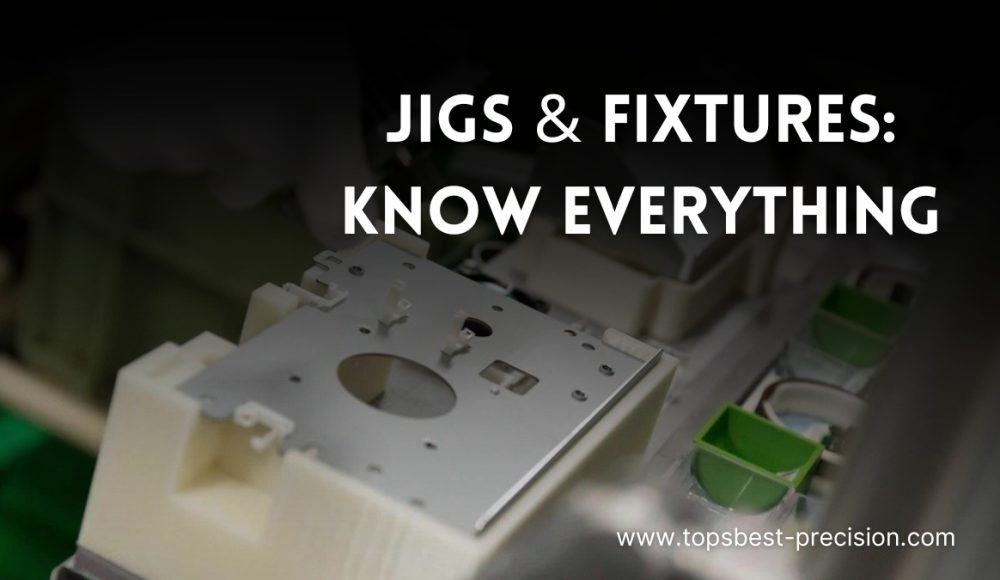
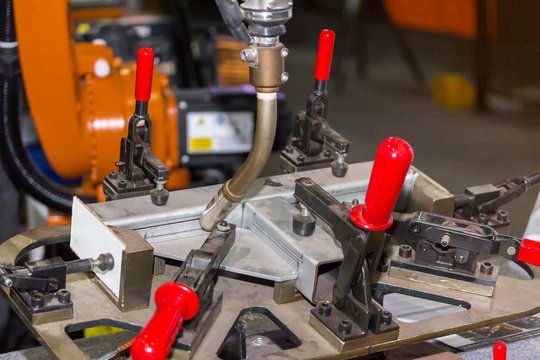
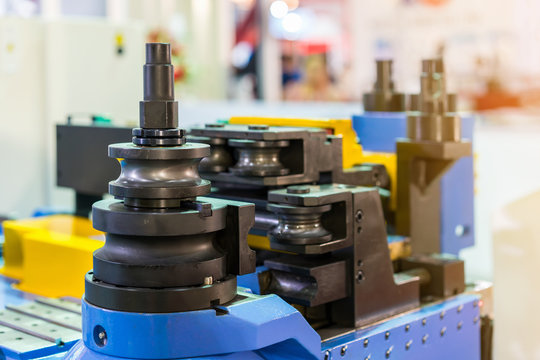
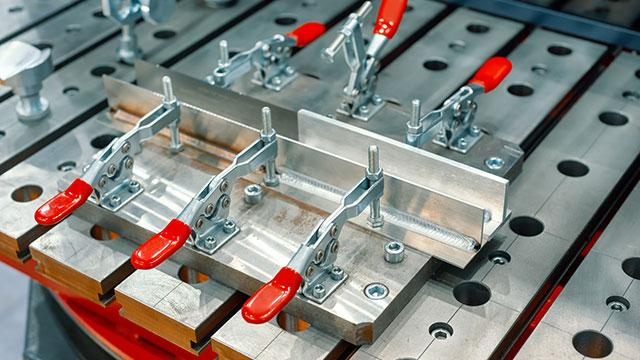
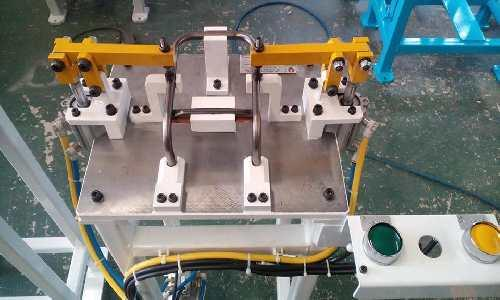

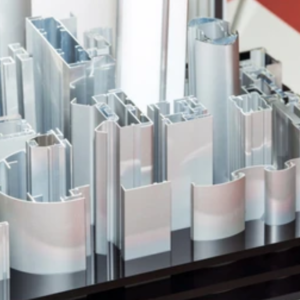
2 افكار عن "الرقص والتركيبات: كل ما تحتاج إلى معرفته”